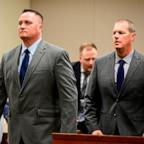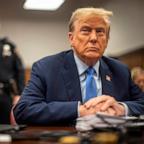Fed Boosts Key Interest Rate
Jan. 31, 2006 — -- In the final meeting of the Federal Reserve's Open Market Committee with Alan Greenspan at the helm, the Fed raised a key interest rate one-quarter percentage point. It was the 14th interest rate hike since June 2004.
The Fed raised the federal funds rate, the rate banks charge for overnight loans, to 4.5 percent. The Fed increases interest rates to defuse inflationary pressures. It lowers rates to spur economic activity in tough times.
After the 9/11 attacks, Greenspan and Co. lowered interest rates to an historic low of 1 percent to keep the economy moving. For the past two years, Greenspan led the move to push the funds rate up to slow the economy to make sure that inflation rates remained low.
The prime rate, the benchmark for millions of home equity and other consumer and business loans, was at 7.25 percent before this week's meeting and rose to 7.5 percent with the Fed rate increase, the highest level in nearly five years.
Today's FOMC session was the final Fed meeting of Greenspan's 18-year tenure as head of the nation's bank. Greenspan, 79, has led the U.S. central bank since August 1987 and is expected to spend his post-Fed career writing and hitting the lucrative public-speaking circuit. He has also said he plans to open an economics consulting firm.
Greenspan's replacement, former Fed governor Ben Bernanke, was nominated by President Bush in October and was confirmed by the Senate today. He will start work at the Federal Reserve on Wednesday.
Today's move was widely anticipated by economists, but what will happen at future meetings remains unclear.
The post-meeting statement, which has signaled the Fed's next move during the past 19 months by including a reference to raising rates at a "measured" pace, has become slightly murkier.
Today's statement contained some minor changes, referring to the unevenness of recent economic reports (gross domestic product growth of just 1.1 percent during the fourth quarter of 2005) and some softening of the language on future rate hikes.
If fourth-quarter GDP sees some upward revisions in the coming two months, many economists will bet on another quarter-point hike in March.
Why? The FOMC meets again on March 28, with Bernanke at the helm for the first time. The new chairman will likely want to establish his bona fides as an inflation fighter, and a rate hike would prove that to the markets.
We'll get a hint as to where the plain-spoken Bernanke is before then, as he faces two days of Capitol Hill testimony on the state of the economy on March 15 and 16.
A hike of the federal funds rate has a direct effect on most of your short-term, revolving loans. The prime rate, which many credit cards are tied to, moves in lock step with the federal funds rate. Home equity lines, in which you borrow against the value of your home, are tied to the rate that changed today.
Long-term loan rates, like mortgages and student loans, are less directly affected by the Fed's moves because they are tied to the bond market. These rates tend to use the fed funds rate as an indicator of trends -- when the short-term rates go up, historically long-term rates will follow.




